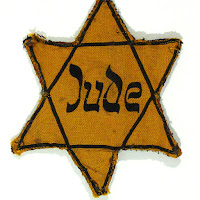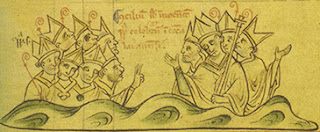Evidently Paul believed that the words Christ had said at the Last Supper, “This is my Body,” meant that really and physically the bread is his body. In fact Christ was not merely saying that the bread was his body; he was decreeing that it should be so and that it is so. [source]
The idea that the bread and wine of the Last Supper was not just bread and wine offered symbolically was a powerful image, and it was made official Church doctrine by the Fourth Lateran Council of 1215. But the bread and wine was considered special as early as the 1st century CE as evidenced by the Didache.
The Didache (Classical Greek, "Teaching") is perhaps the earliest document outside of the Bible that deals with Christianity. Its first line is "The teaching of the Lord to the Gentiles (or Nations) by the twelve apostles." It states:
Let no one eat or drink of your Eucharist, unless they have been baptized into the name of the Lord; for concerning this also the Lord has said, 'Give not that which is holy to the dogs'.
The idea of bread and wine actually converting had its supporters and doubters, of course, and there were works written to support both sides. One of the arguments in favor was that Jesus would not lie, and so when he says "This is my body," it is to be taken as proof that the bread has somehow transformed into his flesh. Berengar of Tours, however, in the 11th century argued against any actual physical change; I mentioned this many years ago when talking about Lanfranc, who was forced to argue against Berengar partially for personal and political reasons.
It has been speculated that Hildebert of Lavardin may have studied under Berengar. Whether true or not, Hildebert did not support Berengar's views on the bread and wine. In fact, Hildebert believed just the opposite, and it is in his writings that the word "transubstantiation" is first used to describe the process spoken of by Jesus at the Last Supper. The Fourth Lateran Council took up this terminology when they said the bread and wine "transubstantiate" during the Mass.
But what about Berengar? He was obviously influential but had different ideas from some of his contemporaries. How important was he? Did he have anything else to say besides his rejection of transubstantiation? Let's talk about him next time.















